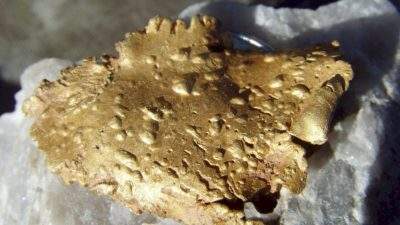
As previously announced, a 3,500 metre Air Core (AC) drilling program was designed to test several of the numerous, high-quality, gold geochemical anomalies. The program commenced on schedule and is expected to be completed in under a month, with initial results being announced in early 2019.
Roscan president and CEO Greg Isenor said: “We are excited to get on the path to unlocking the potential of the Kandiole gold project and look forward to announcing the results of our initial drilling program as soon as we can. In addition, we expect to announce plans for a follow up program including the testing of anomalies that were not drilled in this first pass program.
“Our past experience and knowledge of this area has allowed us to fast forward our exploration and initiate a drilling program.”
The 3,500-metre drilling program consists of approximately 77 holes (47 holes on Mankouke & 30 holes on Moussala Nord). These AC holes are designed to test the full width of a series of strong gold anomalies in termite mounds with coincident gold-in-soil anomalies.
The Mankouke property overlies a northerly-trending magnetic Siribaya structure that is interpreted to represent a regional scale thrust fault. Some of Roscan’s strongest termite and gold-in-soil anomalies lies along this structure. The Siribaya Structure, and the corridor associated with the structure, hosts established resources (Siribaya – 303,900 ounces indicated at 2.34 g/t gold and 301,400 ounces gold inferred at 2.17 g/t gold1) and additional exciting new discoveries (Oklo’s Seko – intercepts to 4.38 g/t gold over 45 metres2 and Komet’s Kabaya – intercepts to 2.02 g/t gold over 62 metres3). The Mankouke targets have similar geochemical expressions as other discoveries on this structural corridor. Three drill fences, planned to test the stronger targets in the Mankouke area, are summarized as follows:
Line 1 – tests an anomalous area up to 750 metres wide and 600 metres long with termite and soil values ranging from 102 ppb to 588 ppb gold. This target area lies in a magnetic embayment along the magnetic trend which may represent a large hydrothermal alteration zone.
Line 2 – tests a target area up to 400 metres wide by 800 metres long with termite and soil values ranging from 52 ppb to 499 ppb gold. This target area lies approximately 1,000 metres to the south of the line 1 target area and along the same interpreted mineralized structure.
Line 3 lies approximately 500 metres to the south and west of line 2 target area. This drill fence will test an interpreted, approximately 1,200-metre long, parallel mineralization trend across a 425 metres wide target area with termite and soil values ranging from 127 ppb to 675 ppb gold.
Drill fences at Moussala Nord are designed to test three strong anomalous gold trends. These anomalies are well defined and appear to be associated with a strong, northeast-trending structure that is semi-parallel to, and west of, the Siribaya Structure. The three drill fences range from 225 metres to 275 metres wide with termite and soil values ranging up to 16,000 ppb gold. Two of the drill fences will cross over artisanal mining areas that are currently being mined.
It is expected that in early 2019, a follow up program of Reverse Circulation (“RC”) drilling, and additional AC drilling will be initiated in areas with the most significant AC results.
GEOCHEMICAL SAMPLING PROGRAM
In addition, a crew of 25 personnel, including three senior geologists, are at the site and active in the field with soil and termite sampling. The exploration camp has been set up to support the field crews and equipped to manage all of the data being collected. The sampling program, which has been designed to cover the high priority targets and areas of interest, will result in approximately 75% of the permits being covered with termite and soil samples. It is expected that this sampling program will identify further drill targets.
Source: Company Press Release






